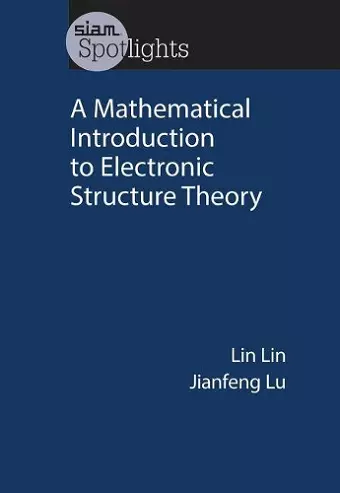A Mathematical Introduction to Electronic Structure Theory
Lin Lin author Jianfeng Lu author
Format:Paperback
Publisher:Society for Industrial & Applied Mathematics,U.S.
Published:30th Jun '19
Currently unavailable, our supplier has not provided us a restock date

Based on first principle quantum mechanics, electronic structure theory is widely used in physics, chemistry, materials science, and related fields and has recently received increasing research attention in applied and computational mathematics. This book provides a self-contained, mathematically oriented introduction to the subject and its associated algorithms and analysis. It will help applied mathematics students and researchers with minimal background in physics understand the basics of electronic structure theory and prepare them to conduct research in this area.
A Mathematical Introduction to Electronic Structure Theory begins with an elementary introduction of quantum mechanics, including the uncertainty principle and the Hartree–Fock theory, which is considered the starting point of modern electronic structure theory. The authors then provide an in-depth discussion of two carefully selected topics that are directly related to several aspects of modern electronic structure calculations: density matrix based algorithms and linear response theory. Chapter 2 introduces the Kohn–Sham density functional theory with a focus on the density matrix based numerical algorithms, and Chapter 3 introduces linear response theory, which provides a unified viewpoint of several important phenomena in physics and numerics. An understanding of these topics will prepare readers for more advanced topics in this field. The book concludes with the random phase approximation to the correlation energy.
The book is written for advanced undergraduate and beginning graduate students, specifically those with mathematical backgrounds but without a priori knowledge of quantum mechanics, and can be used for self-study by researchers, instructors, and other scientists. The book can also serve as a starting point to learn about many-body perturbation theory, a topic at the frontier of the study of interacting electrons.
ISBN: 9781611975796
Dimensions: unknown
Weight: 322g
127 pages